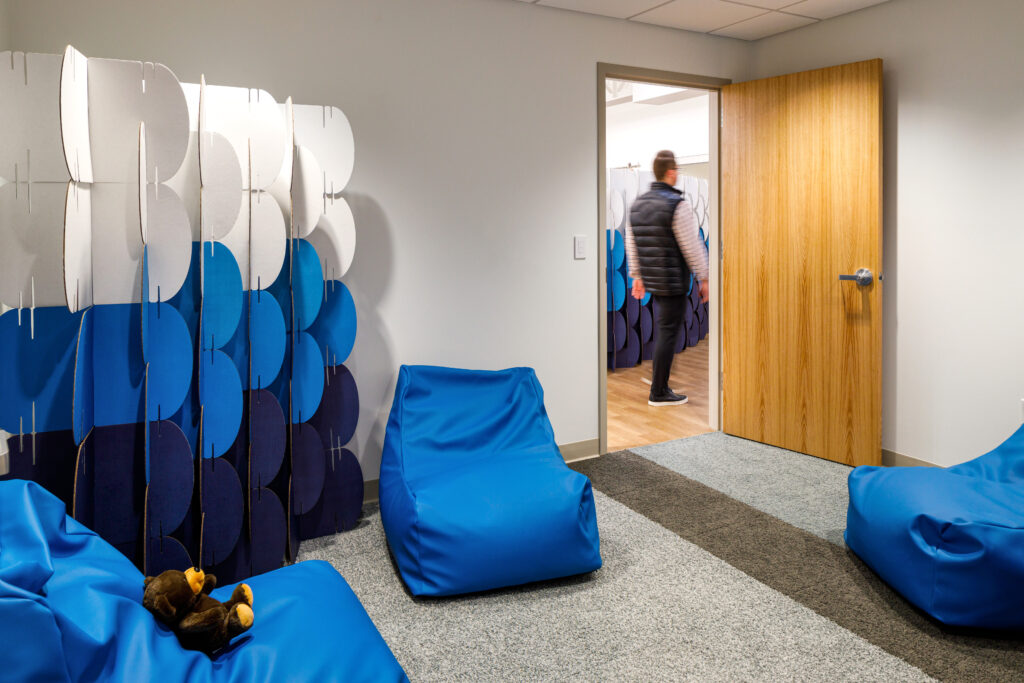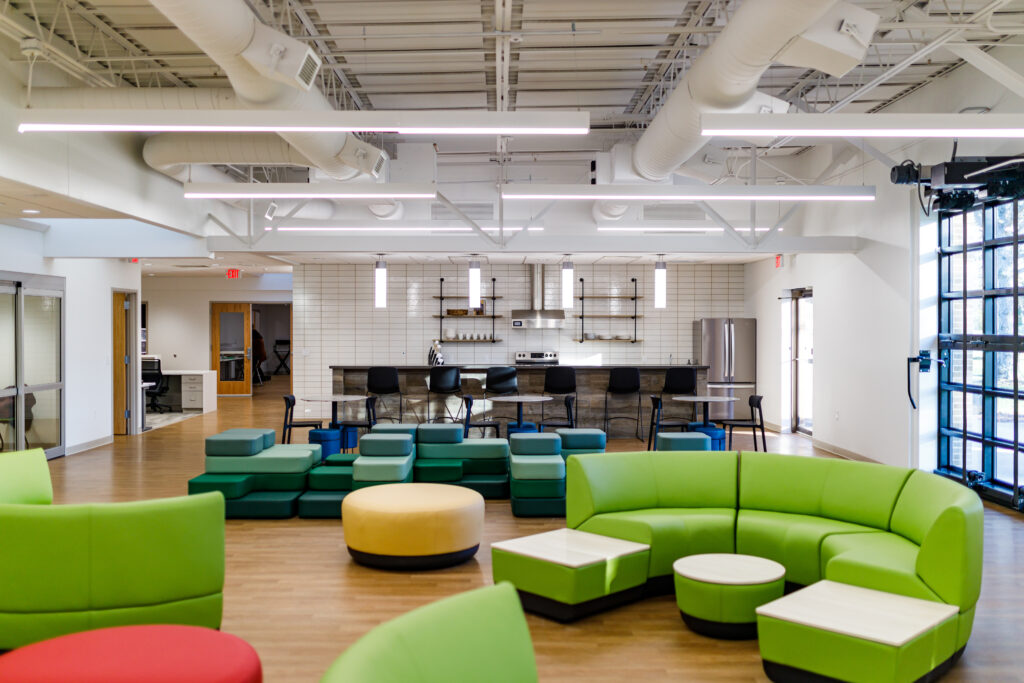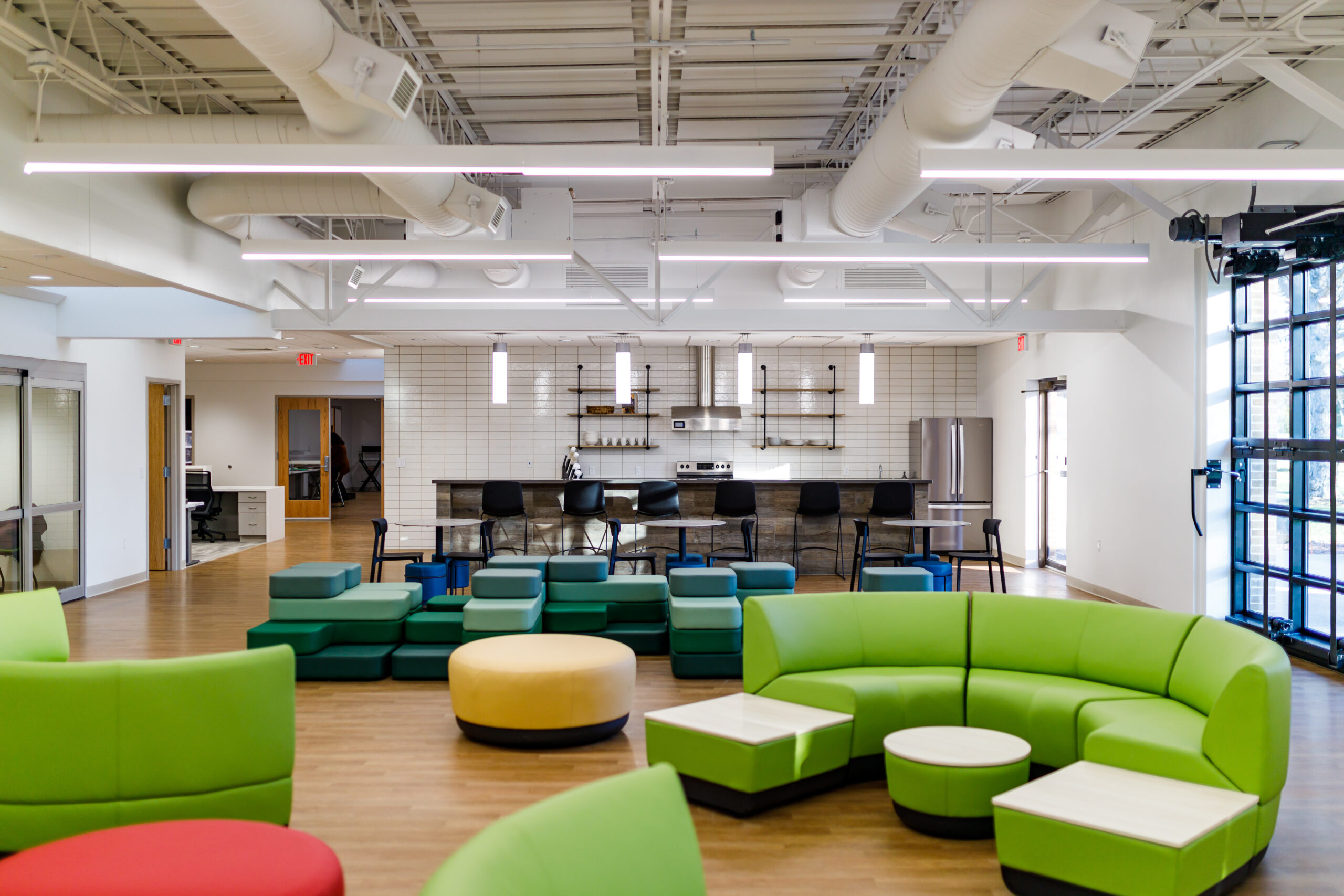Treffert Studios is an innovative facility that expands clinical services and programs offered by the SSM Health Treffert Center. The Center, founded by the autism and savant syndrome expert Dr. Darold Treffert, seeks to help neurodivergent individuals find their passion and express their talents, giving them a voice and platform to share their strengths with the world.
The new facility is located in a former office building on the Moraine Park Technical College (MPTC) campus. This new location provides a stronger connection and easier access for Treffert Center students to take advantage of MPTC programs to leverage their talents and develop skills that can translate into future employment.
The Treffert Studios stakeholders are passionate about helping young adults develop skills, focusing on their strengths and neurodiversity and came to the design process with many creative ideas. To help narrow down and prioritize their ideas, we began the project with a visioning session. Current clients and their families were invited to the session to provide input and help define what the facility would look and feel like. Goals for the new facility were identified:
- Leverage technology
- Develop new treatments and skills
- Be client focused
- Build strong relationships – Create a sensory aware physical environment
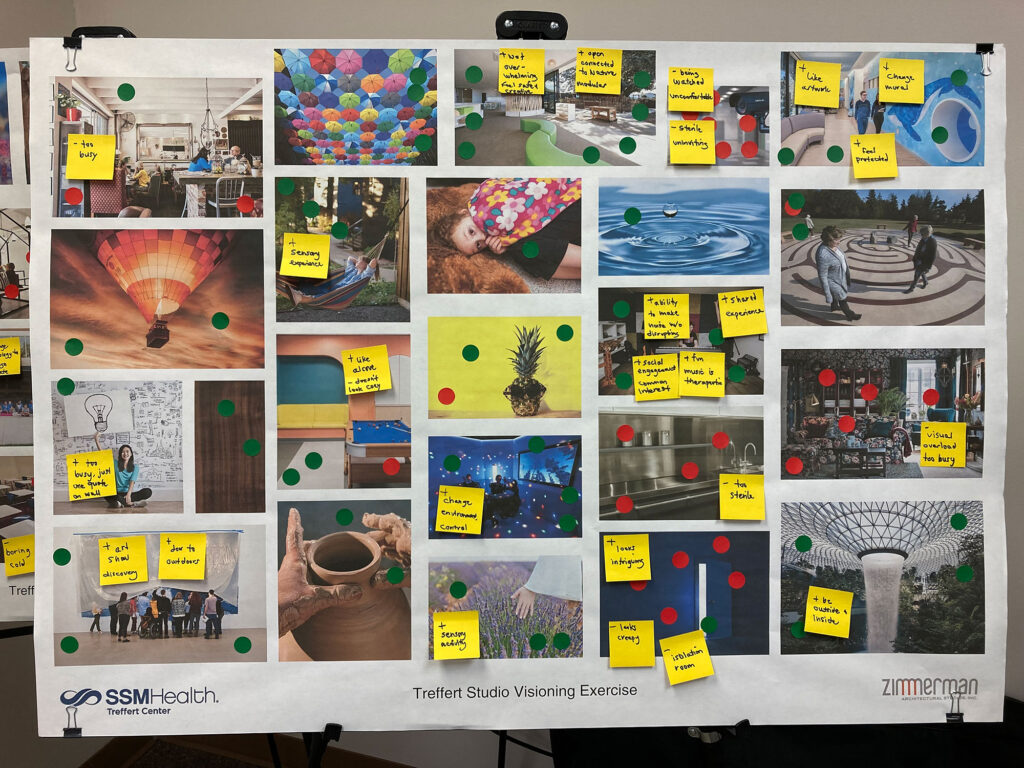
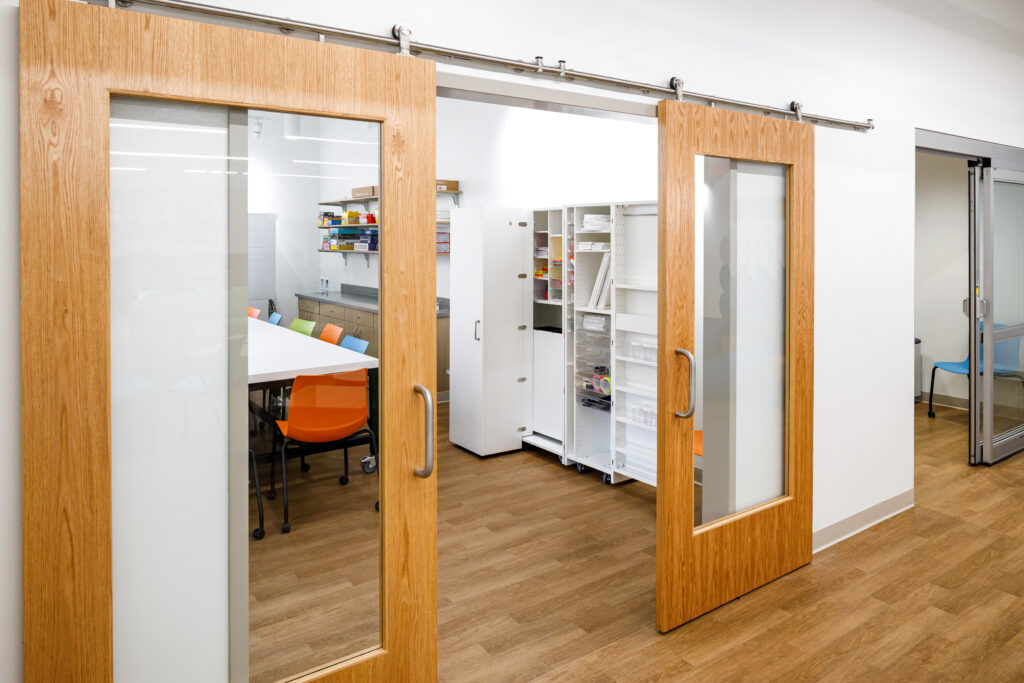
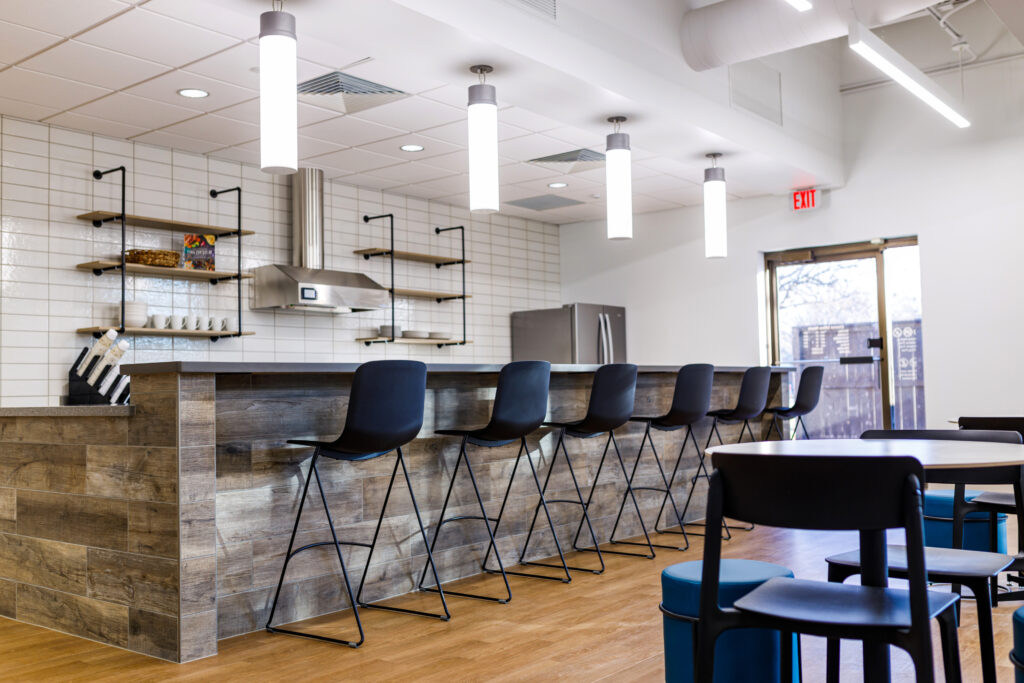
To develop the building layout, the Zimmerman team then led the stakeholders through a puzzle play exercise. Through this exercise, the team tested a variety of layout options to find the optimal adjacencies and flow for the spaces. A staff zone was created on the west side of the building with focused workspace and a staff lounge. Therapy rooms are grouped together for privacy and acoustic control. Small group activity rooms and a large art classroom open onto to the large activity space. Existing skylights and a large operable door bring natural light into the activity space. A café provides a location where students and families to socialize. The event space will host performances and speakers. The adjacent control room and recording room will be used for video and music production.
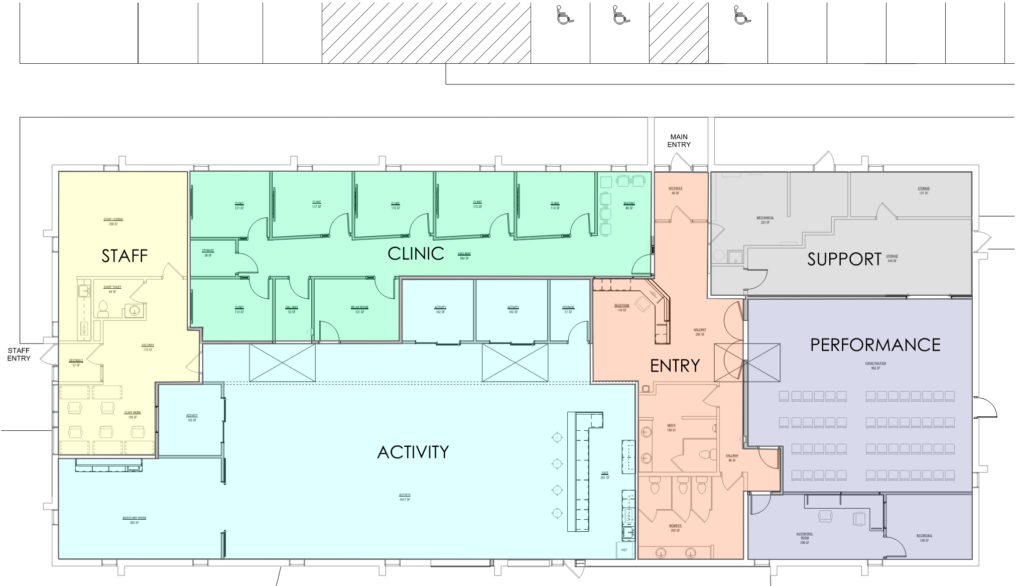
The interior design supports the stakeholders’ goals of providing space a sensory aware physical environment that is client focused. Spaces that are more inclusive and consider sensory processing issues help all users of the building learn and thrive. The interior finish palette uses neutral flooring materials and white walls to allow the furniture and artwork to provide color accents. The open wall space will function as a gallery to display the students’ artwork. The stakeholders were directly involved in the furniture selection which provides a variety of mobile seating options and levels of comfort, giving students choices and control over their environment.
